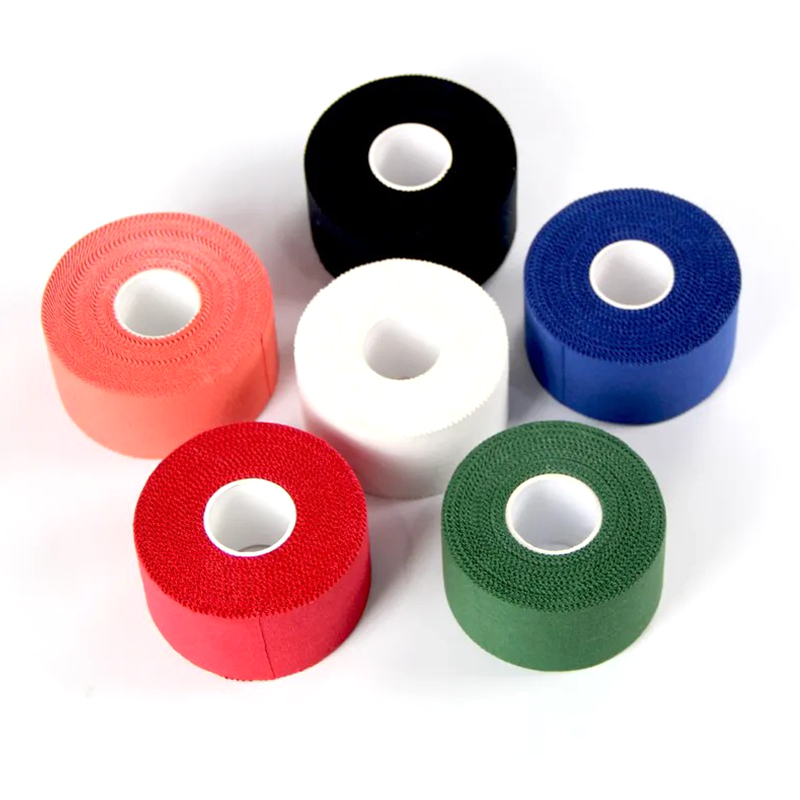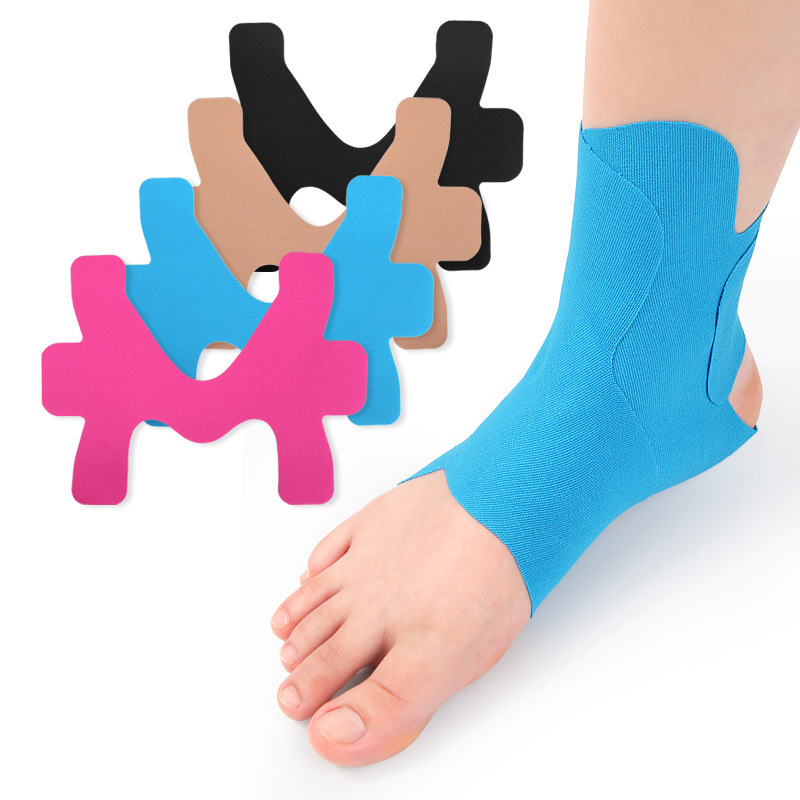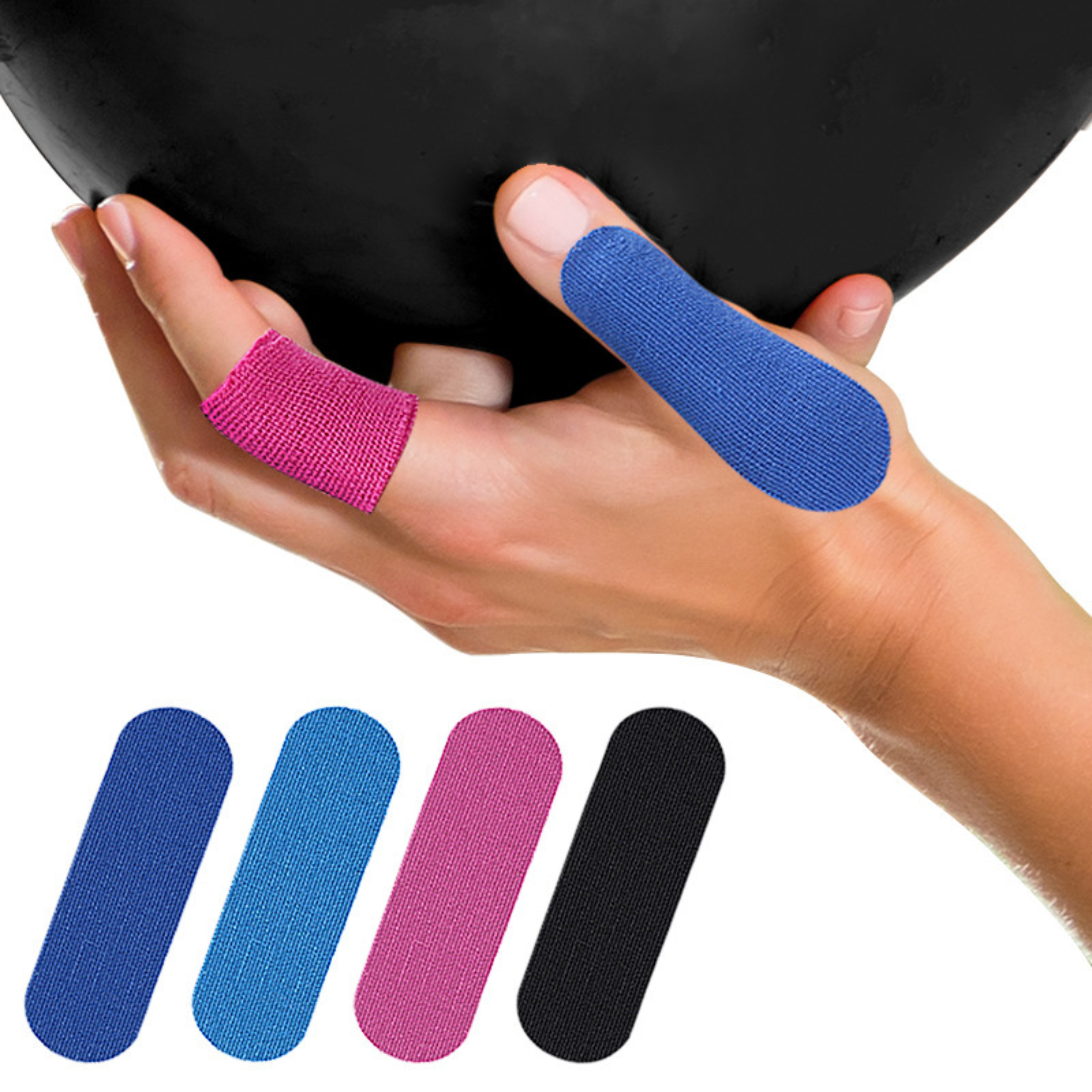News

How Rigid Sports Tape Reduces the Risk of Sprains and Strains
In sports and physical activity, the body is constantly exposed to stresses that can push joints, ligaments, and muscles beyond their limits. Among the most common injuries faced by athletes are sprains and strains. These injuries can range from mild discomfort to severe damage that requires long recovery periods. For this reason, athletes, trainers, and medical professionals often turn to preventive tools that help minimize injury risk. One of the most widely used methods is the application of rigid sports tape.
Rigid sports tape is specifically designed to provide strong support to joints and soft tissues. Unlike elastic tape, it does not stretch, which allows it to restrict excessive movement. This characteristic makes it especially effective for stabilizing vulnerable joints during high intensity or repetitive activities. To understand how rigid sports tape reduces the risk of sprains and strains, it is useful to look closely at what these injuries involve, why they occur, and how taping works to prevent them.
Understanding Sprains and Strains
Sprains and strains are terms that are often used interchangeably, but they describe different injuries.
Sprains occur when ligaments, which are bands of connective tissue that connect bone to bone, are overstretched or torn. They are most common in the ankles, knees, and wrists. A sprain typically results from sudden twisting or impact that forces a joint beyond its normal range of motion.
Strains involve muscles or tendons, which are tissues that connect muscle to bone. A strain occurs when these tissues are stretched or torn, often due to overuse, fatigue, or improper movement. Strains frequently affect the back, hamstrings, and shoulders.
Both injuries can cause pain, swelling, limited mobility, and downtime from physical activity. While mild cases may heal with rest and conservative care, severe cases can sideline athletes for weeks or months.
Because sprains and strains are so common in both professional and recreational sports, preventing them is a central focus in sports medicine. Rigid sports tape plays a vital role in this preventive strategy.
What Is Rigid Sports Tape
Rigid sports tape is a strong, non-elastic adhesive tape designed to immobilize or stabilize joints and soft tissues. It is typically made of cotton or a similar fabric with a powerful adhesive that ensures it stays in place during activity. The lack of stretch is the feature that distinguishes rigid tape from elastic alternatives.
When applied correctly, rigid sports tape provides external support to a joint, limiting harmful movements while still allowing enough mobility for athletic performance. For example, in the ankle, it can prevent excessive inversion or eversion, which are common causes of sprains.
How Rigid Sports Tape Works
The effectiveness of rigid sports tape lies in its ability to restrict specific motions without completely immobilizing the joint. It functions in several ways:
Mechanical Support
The tape physically limits the range of motion of a joint. By reinforcing the ligaments externally, it reduces the likelihood of overstretching or tearing. For example, taping the ankle prevents the foot from rolling inward or outward too far during running or jumping.
Proprioceptive Feedback
Beyond mechanical restriction, taping provides sensory feedback to the athlete. When the tape pulls against the skin during movement, it alerts the body to the position of the joint. This heightened awareness, known as proprioception, helps the athlete adjust movements and avoid positions that could lead to injury.
Reduction of Muscle Fatigue
Taping can help offload stress from muscles and tendons, particularly when they are fatigued. By stabilizing joints, rigid tape allows muscles to work more efficiently and with less strain.
Psychological Confidence
Athletes often report feeling more secure when taped, especially if they have a history of injury. This confidence can reduce hesitation during performance, leading to smoother, more controlled movements.
Rigid Sports Tape and the Prevention of Sprains
Sprains, especially ankle sprains, are among the most frequent injuries in sports. Rigid sports tape helps reduce their risk in several ways:
Limiting Excessive Joint Motion
A sprain typically occurs when a joint moves beyond its safe range. For example, when an ankle rolls inward during landing, the lateral ligaments may stretch or tear. Rigid tape applied around the ankle acts as an external brace, preventing that excessive inward roll.
Stabilizing Previously Injured Joints
Once a ligament has been sprained, it often becomes weaker and more prone to reinjury. Taping provides extra reinforcement to these vulnerable joints, reducing the chances of repeated damage.
Supporting Quick Direction Changes
Many sports involve rapid cutting, pivoting, or sudden changes of direction. These movements put stress on the joints, especially the knees and ankles. Rigid tape stabilizes the joint during these high risk actions.

Rigid Sports Tape and the Prevention of Strains
Strains usually involve muscles and tendons, and while rigid sports tape is not designed to directly strengthen these tissues, it still contributes to their protection.
Reducing Excessive Stretch
By stabilizing the joint, rigid tape prevents the connected muscles and tendons from being overstretched. For instance, taping the shoulder can reduce strain on the rotator cuff during overhead movements.
Improving Muscle Efficiency
When joints are stabilized, muscles do not need to work as hard to maintain alignment. This efficiency reduces fatigue, which is a common factor in muscle strains.
Assisting Recovery
For athletes returning from a strain, rigid tape provides supportive reinforcement that reduces the risk of aggravating the injured tissue during the recovery phase.
Key Taping Applications
Rigid sports tape can be applied to many different joints depending on the sport and the risk of injury. Some common applications include:
Ankle Taping: One of the most frequent uses, designed to prevent inversion or eversion sprains.
Knee Taping: Helps stabilize the patella and support ligaments during running or jumping.
Wrist Taping: Useful in sports like gymnastics or weightlifting, where the wrist is under constant pressure.
Shoulder Taping: Provides support during overhead motions such as throwing or swimming.
Correct application is essential, as improper taping can restrict blood flow, cause skin irritation, or fail to provide the intended support. Many athletes rely on trainers or physiotherapists who have been trained in taping techniques.
Limitations and Considerations
While rigid sports tape is highly effective, it is not a complete solution. Several considerations should be kept in mind:
Temporary Measure: Taping provides external support but does not strengthen ligaments, muscles, or tendons. Athletes should also engage in conditioning and strengthening exercises to build long term resilience.
Proper Technique Required: The benefits of taping depend heavily on correct application. Poorly applied tape may not prevent injury and could even increase discomfort.
Skin Care: Because rigid tape adheres firmly, it can cause irritation, especially when used frequently. Proper skin preparation and tape removal are important.
Not a Substitute for Rehabilitation: For injured athletes, tape can assist in returning to play but should not replace proper rehabilitation programs.
Combining Rigid Sports Tape with Other Preventive Strategies
To maximize protection against sprains and strains, rigid sports tape should be used as part of a broader injury prevention approach. This may include:
Strength Training: Building stronger muscles around joints improves stability.
Flexibility Training: Maintaining good range of motion reduces the risk of overstretching tissues.
Warm Up and Cool Down: Proper preparation before activity and recovery afterward help keep tissues resilient.
Supportive Footwear: Shoes that provide stability and cushioning complement the role of tape in preventing ankle and foot injuries.
Conclusion
Sprains and strains are among the most common injuries that athletes face, but they are not inevitable. Preventive measures, including the strategic use of rigid sports tape, can significantly reduce the risk of these injuries. By mechanically limiting harmful movements, enhancing proprioception, and supporting fatigued muscles, rigid tape provides both physical and psychological benefits.
While not a permanent solution or a replacement for training and conditioning, rigid sports tape is an invaluable tool for athletes seeking to protect themselves from common injuries. When applied correctly and combined with broader injury prevention strategies, it allows athletes to perform with greater safety and confidence.

- ASHER.CAO:+86-176 2548 7782 Asher.cao@healthline-medical.com
- HARONJU:+86-198 5296 4937 haronju@healthline-medical.com
- DI.TIAN:+86-183 0527 6521 Di.tian@healthline-medical.com
- Tel:+86-512-6289 3223
- Mob:+86-176 2548 7782 / +86-198 5296 4937 / +86-183 0527 6521
-
Email:zhujun@healthline-medical.com
sales@healthline-medical.com
- Whatsapp / Wechat:+86-176 2548 7782 ; +86-198 5296 4937; +86-183 0527 6521
- Skype:+86-176 2548 7782 / +86-183 0527 6521
Copyright © 2025 SUZHOU HEALTHLINE MEDICAL PRODUCTS CO., LTD
All Rights Reserved.

The information provided on this website is intended for use only in countries and jurisdictions outside of the People's Republic of China.


 English
English Español
Español русский
русский عربى
عربى











